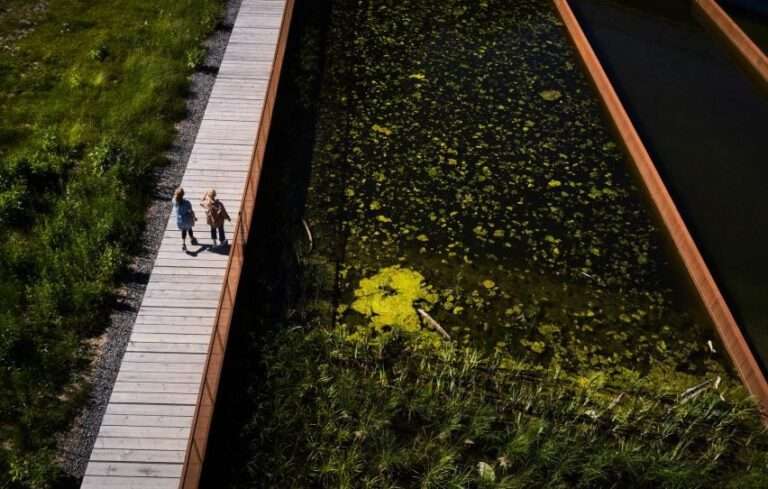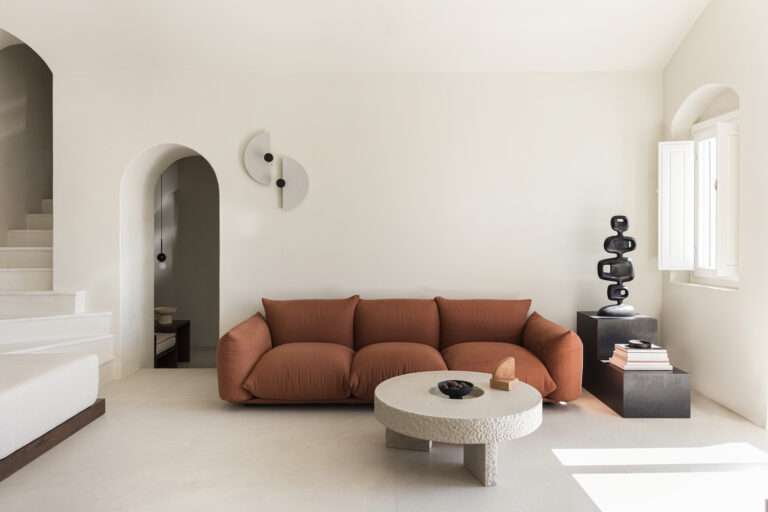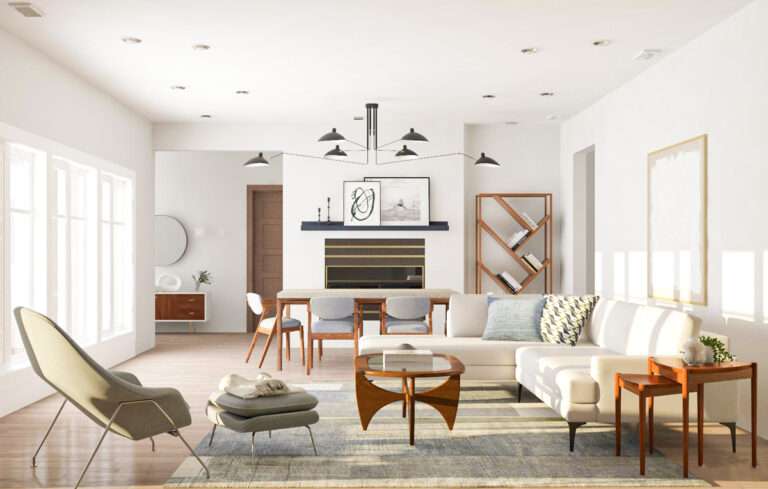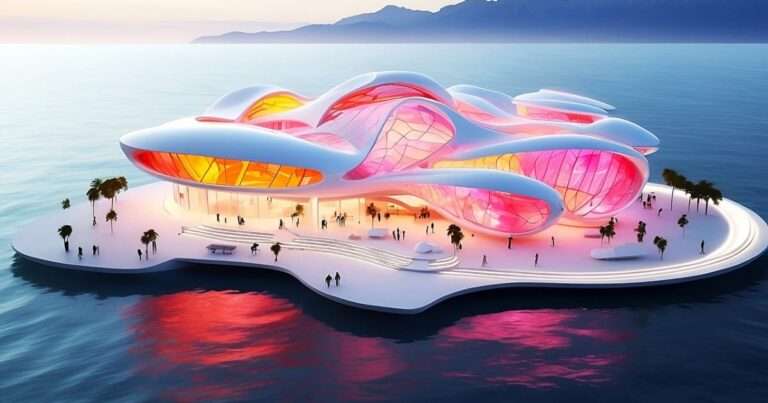Suspended gabions weights provide a counterweight to the steel cantilever in this hilltop pavilion designed by Emiliano Domínguez and Santiago Martínez in Querétaro, Mexico.
Known as Espina, the pavilion sits high above a cattle ranch in Santiago de Querétaro, opening visitors to a 360-degree, panoramic view of the mountain landscape of central Mexico.
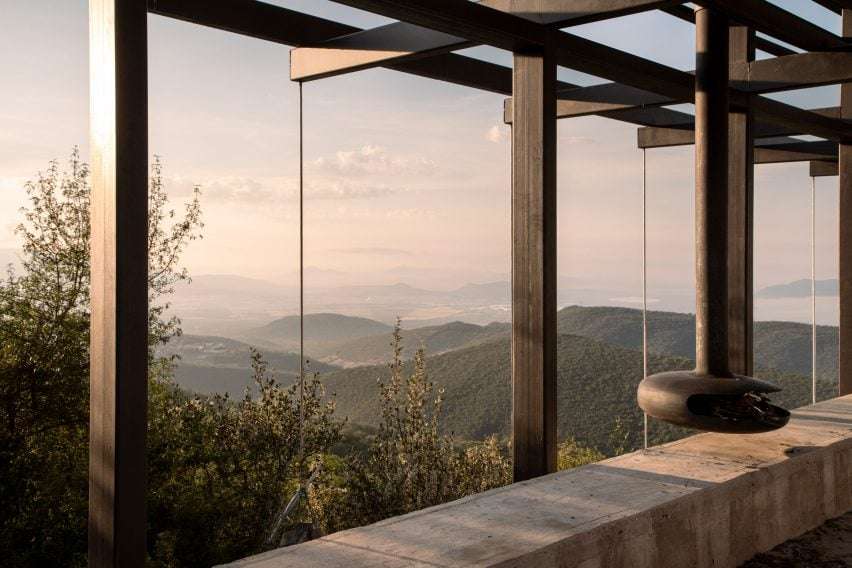
Architects Emiliano Domínguez and Santiago Martínez completed the compact 21-square metre (226-square foot) structure in 2023.
“Espina emerges from the synergy of different elements that interact to achieve both structural and visual balance,” the team told Dezeen.
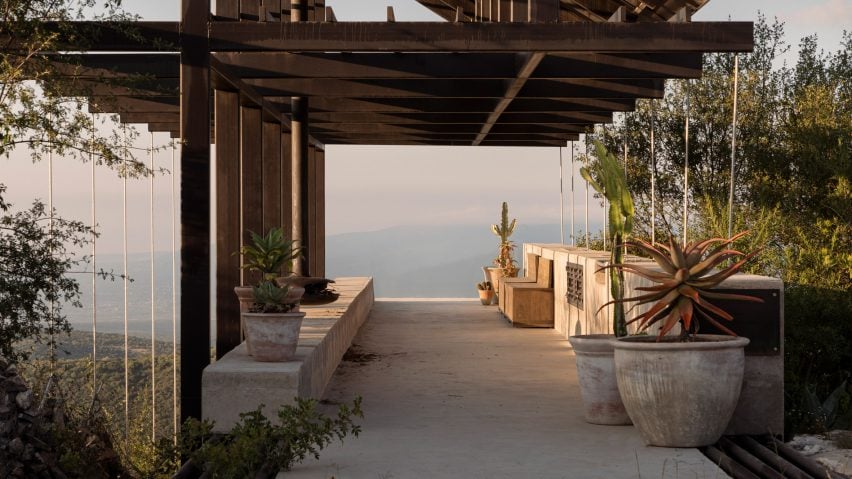
“It is a pavilion without a defined program, serving the sole purpose of providing shade and directing views towards the horizon.”
Two parallel concrete foundation walls – cast in place due to the site’s geography and remote location that can only be accessed by horse or four-wheeler – rise out of the vegetation running north to south.
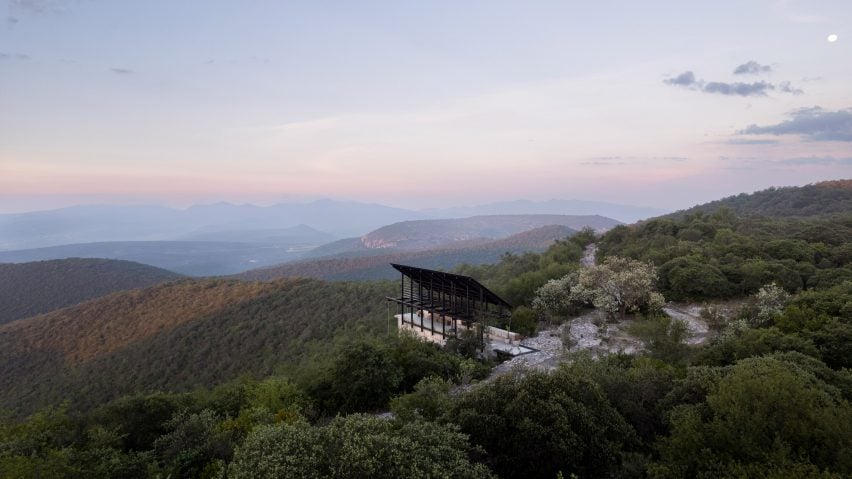
Bridging the concrete walls is an open platform that extends from the hillside out over the landscape. Cattle guards protect the entrance, and the walls rise slightly: one wall becoming a backrest for benches while the other lower wall frames the space.
A small wood-burning fireplace extends down on one side and a few potted plants decorate the space, which is otherwise left open to the surrounding views of the sunrise and sunset.

A lightweight, black steel frame rises to support the roof structure from one side. Shaped like a “4”, the modular frame forks out to hold a corrugated metal slanted roof.
“This framework serves a dual purpose – on one hand, delineating the footprint area, and on the other hand, extending in cantilever towards the west facade,” the team said.
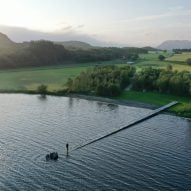
 Rever & Drage extends sloping slate viewpoint into Sundshopen lake
Rever & Drage extends sloping slate viewpoint into Sundshopen lake
Opposite the cantilever, the horizontal braces extend past the footprint and are anchored by gabion masses on tension cables. The gabions are composed of local stone that was extracted when the foundation was poured.
“The dilatation of the structure determines the distance of these counterweights in relation to an endemic landscape that, eventually, will take over the pavilion,” the team explained.
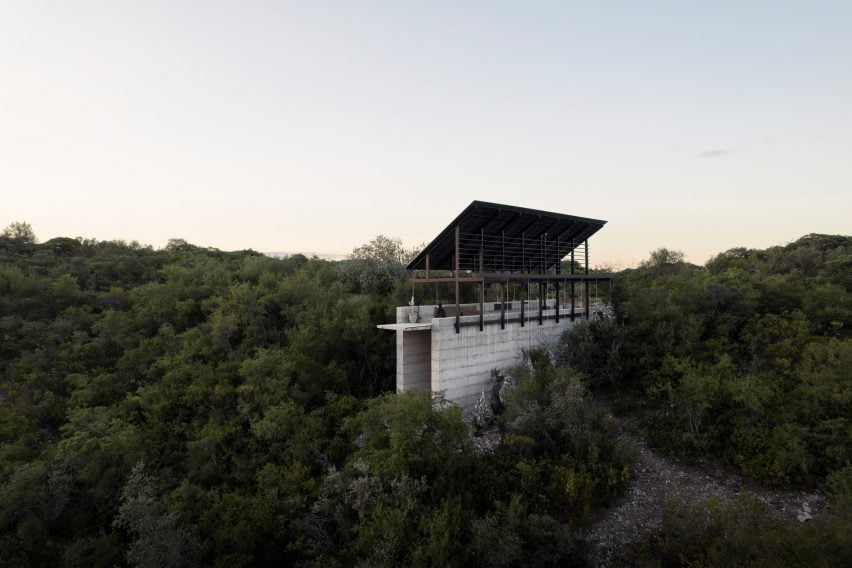
“This contrast between materials and the structural integrity of the design emphasizes the specific function of each element.”
Other pavilions recently completed in Mexico include a reclaimed masonry vault that serves as a music school by TO Arquitectura and a semi-circular, stone-clad pavilion in a public park by Erre Q Erre.
The photography is by César Belio.
Project credits:
Structural engineering: Andrés Casal
Landscaping: Matorral
Blacksmith: Gregorio Cisneros
